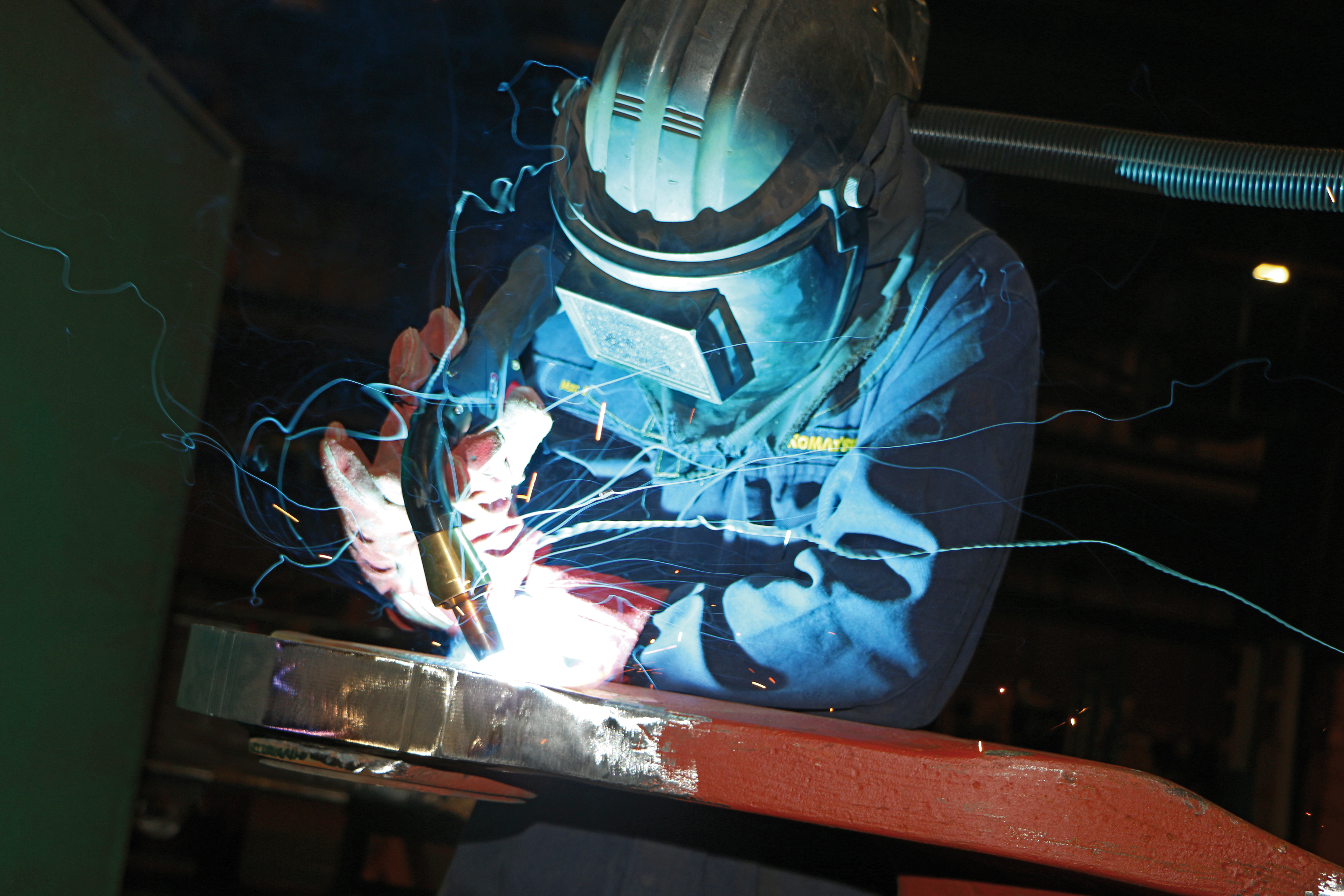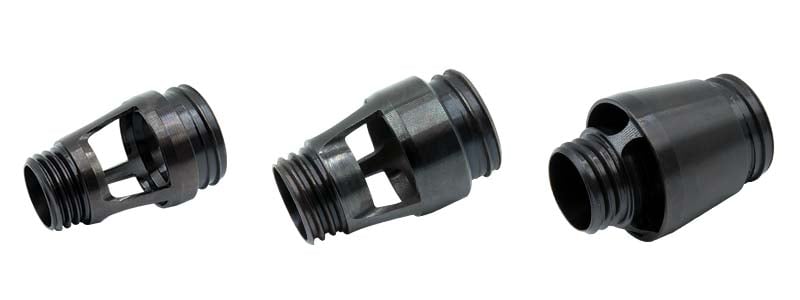Fume extraction systems are big investment for your plant. Especially when using either a single station or multi-station fume extractor, it's bound to encounter problems at some point during it's service life.
That's normal and you shouldn't be surprised by that.
What's important is knowing what problems are normal and expected, and how you can solve them quickly either through your owns means or with the help of a fume extraction expert. These can include problems like:
-
Fume Extraction System Won't Collect Fumes
-
Fume Extraction System Power Requirements
-
Preventative Maintenance of Systems
-
Noisy Fume Extraction Systems
Here, we'll cover four very common issues manufacturing operations have with their fume extraction systems and what you can do to deal with them effectively.
Fume Extraction System Won’t Collect Fumes
This is a common problem usually related to gas flow. In many cases, manufacturers are feeding shielding gas at a rate of well above recommended values, often over 50 CFH. When gas is flowing at that high a velocity, it pushes the weld fume away from the arc before the fume extraction gun can collect it through the shroud.
Your fume extraction system has a finite capability of suction. No matter if it’s a pulling at 80 inches of water column or 30, excessive shielding gas flow will limit its ability to capture fume.
Our experience has shown that it is ideal in the lower range of the recommended values between 30 - 35 CFH. Try turn your gas flow down to around that level, make sure weld quality is sufficient, and see how much that benefits smoke capture.
Often times there is a significant gas surge when you press the trigger. Flow can measure in excess of 90 CFH for the first few seconds. Using a portable flow checker, verify if the ball is hitting the top and stays there for more than a fraction of a second. If that happens, you have a gas surge issue.
During a gas surge, the smoke is pushed away from the effective extraction zone of the torch. Proper gas regulation is key to success in smoke extraction, both to protect the weld and to optimize extraction performance.
If you weld at a higher amperage, you will produce more weld fume. This makes vacuum power and welder position a more critical issue. This is when it is important to test your vacuum power.
Use a tool like a manometer to set up at the back of the fume extraction system to gauge pressure (example below).
If you weld at higher parameters, you will need to pull a minimum of 70 inches of water column to capture smoke with your fume extraction system. Check factor like the hose length.
/Blog%20Photos/Fume%20Extraction%20System%20Test%20(Etienne)/Gauge-to-Elbow-Joint.jpg?width=3698&name=Gauge-to-Elbow-Joint.jpg)
The longer your hose or piping is, the more reduction in vacuum pressure.
Should your system not be able to capture at that rate, the only options available are to utilize a different size motor or assess other fume extraction solutions available.
If the welder isn’t positioned properly, the torch will be angled away from the ideal fume extraction point. Regardless of fume extraction torch or extraction system, a welder who isn’t positioned properly will have a negative effect on smoke capture.
If they are welding in difficult position such as vertical, make sure the fume extraction system power is turned up to compensate for gravity. If the welder is horizontal, less power can be sufficient. Adjust your settings as needed.
Fume Extraction System Power Requirements
Power for a fume extraction relates to two items in particular:
- The actual electrical requirement for the unit
- The power needed to allow the fume extraction gun to work properly
Fume extraction systems often encounter lost or inconsistent power to the unit. This has more to do with improper electrical requirements than the unit itself. This is especially true when you need all the capacity of a high power unit.
Manufacturers are not usually prepared to utilize a 230 volt outlet to power a portable fume extraction system. But, if you want to pull at 70 or more inches because your parameters require it, having the right power is critical.
Even if a high power machine is able to connect to 208 volt power, you are likely to experience a reduction in suction as a result.

A simple rule of thumb: Less power to the motor will equal less power to the front end of the fume torch.
For powering the fume extraction torch, there has to be a match between the system and the welding gun. Simply put, some fume extraction guns are designed to work with high-powered units and other with low powered units.
The difference has to do with the front end design and flow restriction within the fume extraction gun. Some need more and some need less.
These trigger other factors as well like:
- Ergonomics
- Weight
- Joint access
Only going for a fume extraction with fewer restrictions to pair with a low powered unit isn’t guaranteed to solve your fume extraction problem. Welding with flux core wire or at high parameters requires high flow fume extraction systems, which means you need a fume extraction gun optimized for high flow, as well. That means front end designs that can capture the volume of smoke such welding will produce. Not every torch or fume extraction system is made to handle that.
If your vacuum is not pulling where it ideally should be, verify the power is pulling enough voltage from your outlet to the system. Newer, higher-power machines are very dependent on the right amount of power to perform.
For example, a machine rated for 230V may be able to connect to a 208V, 3-phase line, but a power reduction like that will result in a near 10% reduction in suction.
Preventative Maintenance of Systems
When you first set up a fume extraction solution it’s common
for the system to work well for the first few months before it starts to lose performance. It's generally because of the lack of preventative maintenance.
Capturing Fume and Debris
Fume extraction systems capture not only fumes but also debris in the air as well. This can build up in the suction shroud and inside the hose at the front end of the gun. This reduces flow throughout the fume extraction system.
Preventative maintenance becomes important to clear debris and spatter build up. Without doing maintenance, these compounds stick to the inside of the suction shroud (as shown below) and hose and cause a reduction of vacuum pressure. They can build up a lot of debris, especially if the plant has dirty, oily air or moisture in the atmosphere. Visually check and clean the hoses out periodically or replace them if they begin to restrict flow to the fume extraction system too much.
Cable and Hose Checks on the Extraction System
Also look for holes and cracks in the hose. These can be hard to find because many fume extraction hoses are corrugated. Cracks inside one of the corrugated ridges are sometimes hard to locate. But holes reduce vacuum pressure so you won't be getting the same suction as when you first set it up in a brand-new system.
Cable covers help but they add a little bit of weight. Many fabricators start with the cable covers but take them off because they want the torch to be light as possible at the expense of the system power.
Kinks in the hose is another item to check. After time the hose develops a memory of where it bends. If the curls up to a certain spot, it creates a kink in the hose. This will affect smoke capture. Monitor for performance issues like that. If there is a permanent kink in the hose then replace that section of hose to prevent loss of vacuum pressure.
Fume Extraction Filters
Filters are another preventative maintenance item to monitor. It’s important to watch for pressure because as the filter ages the debris along with moisture and the oil in the air clogs the filter and they are not cleanable anymore. When this occurs, the filter needs replacement.
/Blog%20Photos/Fume%20Extraction%20Filter%20Facts/Screen%20Shot%202020-04-09%20at%2011.39.19%20AM.png?width=3584&name=Screen%20Shot%202020-04-09%20at%2011.39.19%20AM.png) The best way to assess filter life on your fume extraction system is to monitor the pressure on the gauge. If optimum vacuum pressure cannot be achieved even after cleaning the filter, then it should be replaced. Some fume extraction system will use a maintenance warning light, which is a less exact but easier way to assess the filter.
The best way to assess filter life on your fume extraction system is to monitor the pressure on the gauge. If optimum vacuum pressure cannot be achieved even after cleaning the filter, then it should be replaced. Some fume extraction system will use a maintenance warning light, which is a less exact but easier way to assess the filter.
Every welding application is different because different filler metals and the air quality inside the plant varies. A filter that lasts a year in one application might only last six months in another. For preventative maintenance, you will have to develop and tailor a maintenance schedule to your welding application.
Variables such as wire type, wire size, base metal, and weld parameters will all factor into your preventative maintenance schedule.
Like with anything regarding your welding equipment, check for leaks and make sure that all your connections are tight. If your fume shroud is loose or your nozzle is loose, you will lose power or suck in shielding gas and cause weld porosity.
Noisy Fume Extraction Systems
With high-powered systems, the motor is loud in order to create the needed amount of suction velocity. This creates a lot of noise on the plant floor. The closer the fume extraction system is placed in relation to the work area, the more audible and distracting that noise can be.
Problems such as this may require an after-market solution to control or muffle the noise level. This will also be dependent on the design of you fume extraction system.
Depending on the source of the noise, whether is emanates from an exhaust or from a louver, add on parts such as an acoustic enclosure, sound barrier, or a muffler can help reduce noise and improve sound performance. Other features like acoustical lining within a cabinet can help reduce noise, as well. The better units will already use a system that dampens the level of noise created. 85 dba or under is a commonly accepted decibel level.
Proper PPE is still necessary to use with this equipment. For instance, these won’t replace the need for ear plugs.



